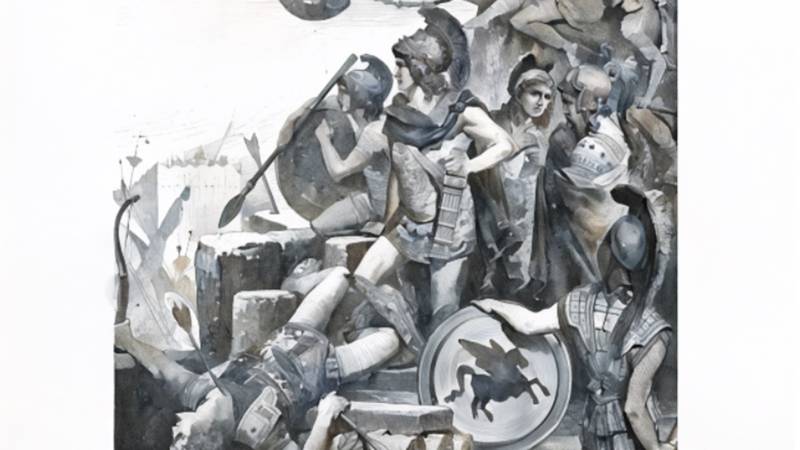
In the spring of 325 BC, Alexander's general Krateros led the majority of the army and the elephants along the left bank of the Indus River, eventually reaching the capital of Mousikanos shortly after Alexander's fleet. In Anabasis of Alexander, Arrian writes, “Krateros he again dispatched with the army (through the country of the Arachotians and Drangians); while he sailed down himself to the realm of Mousikanos, which was reported to be the most opulent in India, because that sovereign had neither come to surrender himself and his country, nor sent envoys to seek his friendship. He had not even sent presents to show the respect due to a mighty king, nor had he asked any favour from Alexander.” Determined, Alexander made a rapid voyage down the river, reaching Mousikanos' borders before the ruler even heard of his impending arrival. Taken aback, Mousikanos hurried to greet Alexander with lavish gifts from India, as well as all his elephants, offering his nation and himself in surrender. Acknowledging his error, Mousikanos gained Alexander’s goodwill by displaying humility. As a result, Alexander fully pardoned him, expressing admiration for Mousikanos’ capital and domain, and confirmed him in his rule (McCrindle, 1898: 157).
Alexander in the country of Musikanus: its unusual trees and plants
Aristobulus (d 301 BC), Alexander’s general and biographer, also recorded details of the campaign. He mentions a self-sown grain similar to wheat in Musikanus’ territory, as well as a vine from which wine was made—likely the same millets grown in the Indus Valley Civilization era. Millet wine, after all, has long been common in South and East Asia. He also described the region’s remarkable flora, noting, “In truth, India produces numerous strange trees, among which is the one whose branches bend downwards and whose leaves are no smaller than a shield.” Onesicritus, who provides elaborate descriptions of Musikanus’ land, adds that it contains immense trees with branches initially growing twelve cubits high before bending earthward, taking root below like natural layers, and eventually forming new trunks. As these new branches also bent down and rooted, they created a vast natural canopy resembling a tent supported by numerous “columns” (Strabo, Book 15).
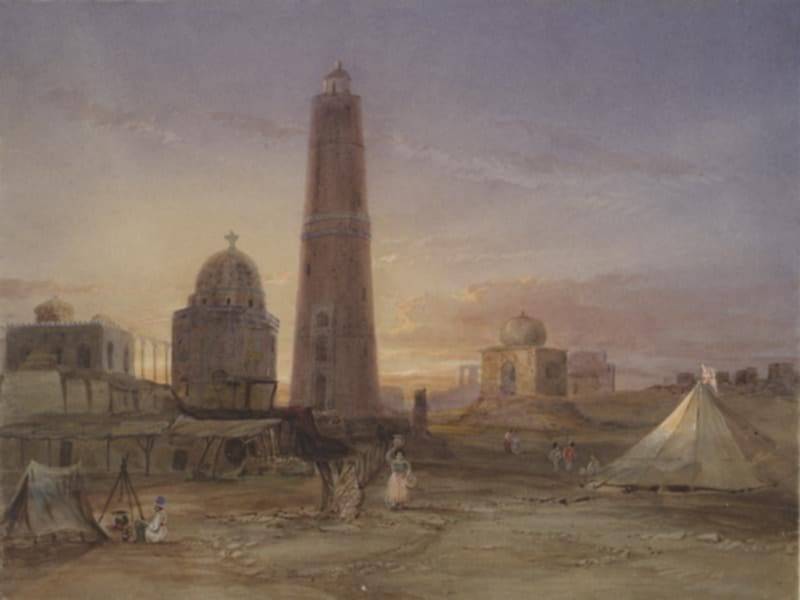
Krateros fortifies the capital of Mousikanos’ kingdom
Mousikanos claimed that Alexander’s arrival had preceded his opportunity to send envoys. Arrian recounts that “Krateros was then ordered to fortify the citadel which protected the capital, and this work was executed while Alexander was still on the spot. A garrison was placed in the fortress, which he thought suitable for keeping the surrounding tribes in subjection” (McCrindle, 1898: 158). According to historian Waldemar Heckel, this was Krateros’ last major operation, accomplished while Alexander remained present (111).
The precise location of Mousikanos' capital remains uncertain, though some historians suggest it may correspond to Alor. Eggermont posits that this site lay along an ancient caravan route from Kandahar through the Khojak and Bolan passes into the Kachhi plain, then through Shikarpur to Sukkur and Alor on the Indus River. Possibly, Alexander founded this citadel or settlement in the spring of 325 BC. Its remnants could likely be found north of Rohri in Pakistan’s Sukkur District. I believe Mousikanos could correspond to Machhka, a region on the border of Sindh and Punjab near Sukkur, Kashmore, and Ghotki. The Machhi were a powerful Sindhi tribe traditionally known for their fishing along the river, and the area of Machhka may similarly denote their homeland, much as Chandka refers to the land of the Chandio people in northwest Sindh.
Campaign against Oxycanus, governor of Praesti
Arrian further describes in Anabasis of Alexander that, “Then he took the archers and the Agrianians and the cavalry which was sailing with him, and marched against the governor of a district in that part of the country whose name was Oxykanos, because he neither came himself nor sent envoys to offer the surrender of himself and his country. At the first assault he took by storm the two largest cities under the rule of Oxykanos, in the second of which that chief himself was taken prisoner. The booty he gave to the army, but the elephants he led away and reserved for himself. After Alexander, Seleucus Nicator I and Ptolemy used elephants in wars against their enemies. The other cities in the same country surrendered without attempting resistance wherever he advanced; so much were the minds of all the Indians paralysed with abject terror by Alexander and the success of his arms” (McCrindle, 1896: 158). Eggermont speculates these may have been distinct rulers—one governing Azeika (Axika), the other Pardabathra—though Lassen identifies them as one under the name Portikanos. Modern scholars often merge them as Oxykanos. I propose that Oxycanus might have been Ucha Channa, a prominent Sindhi tribe still present in Sindh and Balochistan, and that “Acha” could indeed refer to a specific caste within Sindhi society.
King Porticanus is slain by Macedonian soldiers
Quintus Curtius Rufus recounts the fate of King Porticanus, describing how “Having thereafter reduced the Musicani, Alexander put a garrison into their capital, and marched thence into the country of Paraesi, another Indian tribe. Their king was Porticanus, and he with a great body of his countrymen had shut himself up within a strongly fortified city. Alexander, however, took it after 3 day’s siege. Porticanus, who had taken refuge within the citadel after the capture of the city, sent deputies to the king to arrange about terms of capitulation. Before they reached him, however, two towers had fallen down with a dreadful crash, and the Macedonians having made their way through the ruins into the citadel, captured it and slew Porticanus, who with a few others had offered resistance” (McCrindle: 1896, Page 253).
Likewise, Diodorus Siculus narrates in Bibliotheca Historia: “He next invaded the territories under the sway of Portikanos, and took two cities at the first assault, which he permitted the soldiers to sack and then burned. Portikanos himself fled into a part of the country which offered means of defence, but in a battle he was defeated and slain. All the cities subject to his sceptre Alexander captured and razed to the ground, and by these severe measures spread consternation among surrounding tribes.”
Charles Masson and the ancient fortress of Oxycanus in Larkana
Captain Charles Masson, a former East India Company soldier, writes in 1828: “On the banks of the Nari, near Ladkhana, are the remains of an ancient fortress, on a huge mound, called Maihota, a name not unknown to the ancient inhabitants of our isle, being yet preserved by an ancient castle in the northern countries, or in Scotland” (Masson: 1842, Page 261). Sir Alexander Cunningham later identified Oxycanus with Mahota, noting, “I would therefore identify it with the great mound of Mahorta on the bank of the Ghar River, 10 miles from Larkana” (Cunningham: 1871, Page 260). MH Panhwar suggests that Mahota may have been the capital of Oxycanus, a subordinate ruler of Upper Sindh (79). Local traditions also recount Alexander’s march through Mahota, Larkana.
Alexander saw in a vision a serpent carrying a plant, revealing its properties and where it grew. Awaking, he had the plant searched for and found it. He ground it into powder, both applying it to Ptolemy’s wound and administering it as a potion
Alexander and Krateros halt in the ancient City of Pardabathra
Sir Alexander Cunningham, in his Coins of the Indo Scythians, Sakas and Kushans (1888), describes Barda, stating:
“No 13: May be read as Pardabathra, a city placed by Ptolemy on the western bank of the Indus. I presume that this must be the same place as the Barda of Isidorus; but I’m unable to identify it. Perhaps No 12, which seems to be simply B, may be intended for Barda” (Evans, 1888, Page 214).
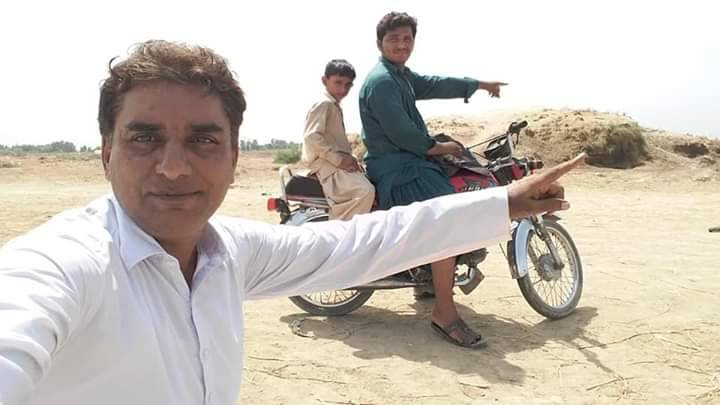
Waldemar Heckel, in The Marshalls of Alexander’s Empire (1992), notes that, “Krateros had continued south with his troops, not much beyond as Pardabathra, where he appears to have remained with the main force while Alexander dealt with Sambos, the defecting satrap of the hill country to the west of the Indus” (Page 112).
Ptolemy’s world map (150 AD) and the ancient cities of Piska and Pardabathra
The Greek geographer Claudius Ptolemy (b 100 AD, d 170 AD) mentions Piska, a town of Indo Scythia on the River Indus, in his Map of World/South Asia (150 AD) (Ptol. 7.1.58). MU Erdosy (1997) includes both Piska and Pardabathra in his Map 6 Asia Orientalis, showing Pardabathra as Piska’s western neighbour. MH Panhwar believes Piska to be Mohenjodaro (An Illustrated Historical Atlas of Soomra Kingdom of Sindh, 2003, Page 40). Meanwhile, I identify Pardabathra as Badeh Bothra, a historic town situated 12 km west of the Mohenjodaro Archaeological Site. The ancient Sukkur Sehwani Road, a significant trade route linking northern and southern Sindh, still exists in this region. Near Badeh City are ruins of Dhamraho Jo Daro, a Buddhist Stupa and Monastery dating back to 400 AD. I have also associated Piska with Portiska (Portica), believed to have been ruled by Porticanus, the Prince of Oxycanus or Upper Sindh, whose territory constituted an island in the Indus called Prasiane.
Discovery of Greek coins from Mohenjodaro
Discussing the discovery of Greek coins from Mohenjodaro, RD Banerji (1926) notes:
“The western side of the platform is covered within the uppermost levels of the rooms of the quadrangle. The fact that the hollow Chaitya was not built exactly in the centre of the solid oblong platform of burnt brick, proves that platform itself cannot be contemporary with the hollow stupa. While excavating the slope on the southern side of this platform a large quantity of ashes were discovered in the crevices of the masonry of burnt bricks proving that the original structure on this platform was burnt down and the hollow Chaitya of sun-dried bricks was built in the place at some later date. The platform of burnt bricks has, attached to it on its eastern side, a shrine with staircase for going up to the base of the stupa and a porch in front in the style of the Gandhara Stupas of the 1st Century BC and AD. The discovery of a solitary but unique Greek coin in this area leads us to suppose that this structure was built in that period” (Page 35).
King Sambus: Sindimana (Sehwan), his capital and treasures
Arrian, in Anabasis of Alexander, recounts:
“He then advanced against Sambos, whom he had appointed satrap of the Indian mountaineers, and who was reported to have fled on hearing that Mousikanos had been pardoned by Alexander, and was ruling his own land, for he and Mousikanos were on hostile terms. But when Alexander approached the city called Sindimana, which formed the metropolis of the country of Sambos, the gates were thrown open on his arrival and the members of the household of Sambos with his treasure (of which they had reckoned up the amount) and his elephants went forth to meet him. Sambos, these men informed him, had fled, not from hostility to Alexander, but from fears to which the pardon of Mousikanos had given rise. He captured besides another city, which had at this time revolted, and he put to death all those Brachmans who had instigated the revolt. These Brachmans are the philosophers of the Indians, and of their philosophy, if so it may be called, I shall give an account in my work which describes India” (159).
Sindimana, identified with modern Sehwan, may have been the seat of the medieval Samma Dynasty, which ruled Sindh, Punjab, Balochistan, and Kachh from 1351 to 1524 AD. Their chief cities were known as Samma Nagar, Samoi, and Sameji.
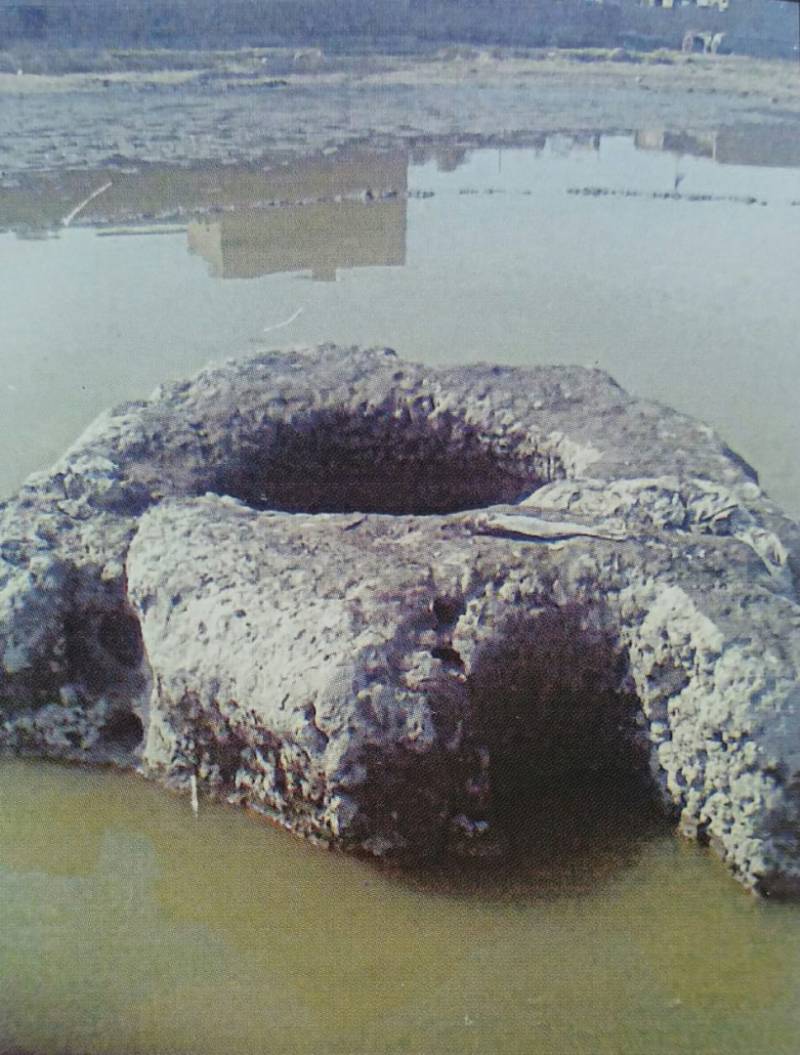
As per Arrian and Diodorus, Sambos’ territory stretched along the Indus’ western bank from Sehwan to the hills. Sambos, escaping beyond the Indus with 30 elephants, left historians questioning his hiding place. He may have taken refuge in the royal fortress of Opiai, now Ranikot, or in the Thar Desert. Although historical records remain silent, Eggermont suggests that Sambos ruled the hill country between Alor and the Bolan Pass, his loyalty shifting only at the rebellion (Arrian 6.15.7).
Diodorus Siculus, in Bibliotheca Historia, records that, “He next plundered the kingdom of Sambos, and having enslaved and destroyed most of his cities, put upwards of 80,000 of the barbarians to the sword” (McCrindle: 1896, Page 293).
Mousikanus is captured and executed by Peithon
Arrian records the fate of Mousikanus in Chapter XVII as follows:
“Meantime he received word that Mousikanus had revolted. Thereupon he dispatched the satrap Peithon, the son of Agenor, against him with an adequate force, while he marched himself against the cities which had been placed under the rule of Mousikanus. Some of these he razed to the ground after reducing the inhabitants to slavery; into others he introduced garrisons and fortified their citadels. When these operations were finished he returned to the camp and the fleet – whither Mousikanus was conducted, who had been taken prisoner by Peithon. Alexander ordered the rebel to be taken to his own country and hanged there, together with all those Brachmans who had instigated him to revolt.” (160)
In The Marshals of Alexander’s Empire (1992), the author further elucidates:
“Soon it was learned that Mousikanos had rebelled—perhaps massacring the Makedonian garrison. Reprisals were conducted by Alexander and Peithon, son of Agenor (the new satrap of the region), soon brought Mousikanos prisoner to Sind, where he was executed.” At this point, Krateros was sent back to Rohri-Alor to restore order there, in the absence of Peithon, who continued south with Alexander, and later to Arachosia and Drangiana.”
“Thus, Krateros, with the brigades of Attalos, Meleagros, Antigenes and Polyperchon, some of the archers, all the elephants […] moved westward, policing Arachosia and Drangiana, which were reported to be in a state of unrest. The ringleaders of the uprising—Arrian names Ordanes, Curtius has Ozines and Zariaspes—were arrested and brought in chains to Alexander, who was by this time in Karmania.” (113)
Peithon, as satrap, waged a campaign against the rebel Mousikanus, ultimately bringing him as captive to Alexander, who condemned him to crucifixion (Curt.9.8.16).
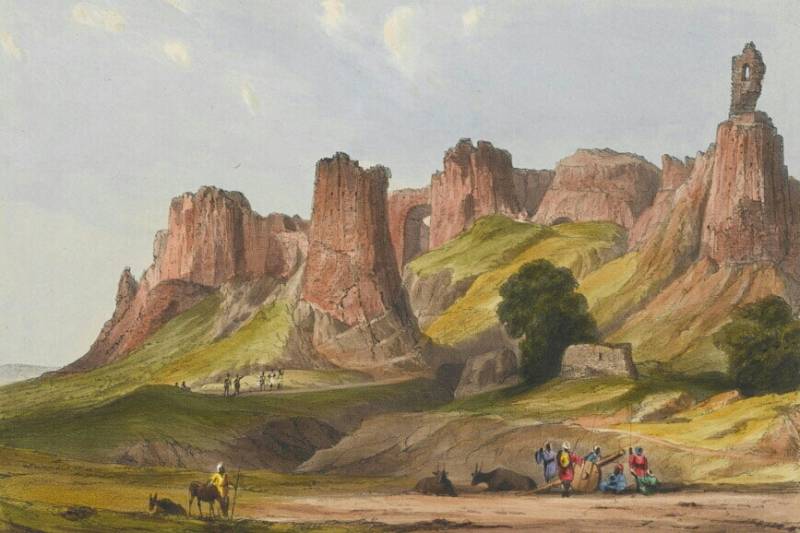
Sambus revolts against Alexander the Great
Quintus Curtius Rufus describes the revolt led by Sambus in his work, writing:
“He next plundered the kingdom of Sambos, and having enslaved and destroyed most of his cities, put upwards of 80,000 of the barbarians to the sword. The nation called the Brahmanoi were involved in like calamities, but, as the rest sued for mercy, Alexander punished the most guilty and acquitted the rest of the offences charged against them. King Sambos escaped the danger with which he was menaced by taking flight with thirty elephants into the country beyond the Indus.” (293)
Captain Delhoste of the Bombay Army (1839) and The Sind Gazetteer (1876) both record, “The old fort of Sehwan, said by the natives to have been built by Alexander the Great.” (723)
The fortress at Sehwan, indeed, is attributed to Alexander the Great, who either constructed or repaired it. This fort, a vital citadel from Greek times through the Arab Conquest of Sindh in 711 AD, remained under the control of various ruling dynasties, including the Soomra, Samma, Arghoon, Tarkhan, and Mughal. The structure, extending over 1.7 kilometers and rising 15 meters in height, covers a mound that spans 400 by 200 meters with an elevation of 18 meters. Since British rule and up to modern times, artefacts such as walls, brick towers, wells, coins, medals, potsherds, bones, and ashes have been discovered, indicating prolonged human occupation and activity.
In 2002, Professor Monique Kervran, a French archaeologist, conducted excavations at the Sehwan Fort Site, noting, “Seven phases of cultural occupation of the city were made clear and were easily interpretable, from the 4th century BC until the 16th century AD.” In 2012, she further clarified the historical significance of Damrillah, the sister town of Daybul and Thatta. In 2021, the Endowment Fund Trust (EFT) for the Preservation of the Heritage of Sindh was commissioned to undertake repair and maintenance of the Alexander-era fort at Sehwan, under the guidance of Jahangir Siddiqui, Hamid Akhund, and Hameed Haroon. EFT also reprinted PHL Eggermont’s work, Alexander’s Campaigns in Sindh and Baluchistan and the Siege of the Brahmin Town of Harmatelia. An international conference, titled Alexander the Great in the Indus Valley, was organized by Hamid Akhund and held in Karachi from 22 to 24 February 2024.
Harmatelia holds out against Alexander
Diodorus Siculus, in Bibliotheca Historia, Chapter CIII, describes the encounter at Harmatelia:
“At the extremity of the country of Brachmans there lay in the midst of difficult ground the city called Harmatelia, and as the inhabitants presumed alike on their valour and the security of their position, Alexander dispatched against them a few light armed troops, who were directed to hang on the rear of the enemy, and to take to flight in case they were attacked. These men proceeded to attack the ramparts, but being only 500 strong were regarded with contempt.” (294)
It is likely that Harmatelia originated as Brahaman Thullah (Tower of Brahmans) or Brahaman Tila, which translates as Citadel of Brahmans. It is worth considering the historical names of Hala and Matiari as well; the present-day towns of Matiari and Hala are situated 30 kilometers from Hyderabad, Sindh. Among nearby sites of interest today are Hala, Brahmanabad, Udero Lal, Nasarpur, Khudabad II, Petaro, Tando Adam, Khebar, and Shahdadpur. Hala is celebrated for its handicrafts, ceramics, and handmade fabrics, and it hosts the Sufi shrine of Shah Abdul Latif Bhittai at Bhit Shah.
Hellenistic settlements in the East: Armenia, Mesopotamia, Bactria and India (2013)
In the first edition of the Greek and Bactrian Inscriptions, GBI Tarn posited that the town Dattamitri, as mentioned in a scholion to the grammarian Patanjali (and in the Mahabharata), referred to a Demetrias in Sind in the lower Indus Valley. Tarn further suggested that this Demetrias was the refounded port city of PATALA. However, E.H. Johnston challenged the Dattamitri–Demetrias equation, and Tarn accepted this refutation in the second edition of the GBI. It must thus be concluded that the Mahabharata does not mention Demetrias. (See JRAS 1939, 1940, Indo Greeks) Demetrius was, in fact, a king of Bactria in 170 BC, and he conquered part of India.
Ptolemy wounded by a poisoned arrow at Harmatelia
Arrian recounts: “A body therefore of 3,000 men under arms sailed out from the city against these troops, which, pretending to be panic-struck, took to a precipitate flight. But the king with a few followers stood his ground against the barbarians who gave pursuit, and after a severe conflict slew some and took others prisoners. On the king’s side, however, not a few received wounds which all but proved fatal, since the barbarians had anointed their steels with a deadly tincture, and had taken the field to bring the war to an issue in full reliance on its efficacy…At this stage the poison quickly spread to the vital parts of the body, and caused a death of fearful agony.” (255)
An antidote revealed to Alexander in a dream
At this critical juncture, a strange and marvelous incident occurred, suggesting divine intervention. Beloved by his soldiers, Ptolemy, severely wounded, inspired their pleas for help. Alexander then saw in a vision a serpent carrying a plant, revealing its properties and where it grew. Awaking, he had the plant searched for and found it. He ground it into powder, both applying it to Ptolemy’s wound and administering it as a potion. By this means, Ptolemy was restored to health, and the other afflicted soldiers who used the remedy also recovered. Following this, Alexander laid siege to the capital of the Harmatelioi, sparing the inhabitants upon their submission. (194)
Thus Ptolemy, along with Alexander’s soldiers, was saved from the lethal snake poison. Ptolemy remained with Alexander during campaigns across Persia, Afghanistan, and India. Following Alexander’s death, he ascended as King and Pharaoh of Egypt, commissioning the Lighthouse of Alexandria in 300 BC. Cleopatra, the last ruler of the Ptolemaic dynasty, was his descendant.
(to be continued)

